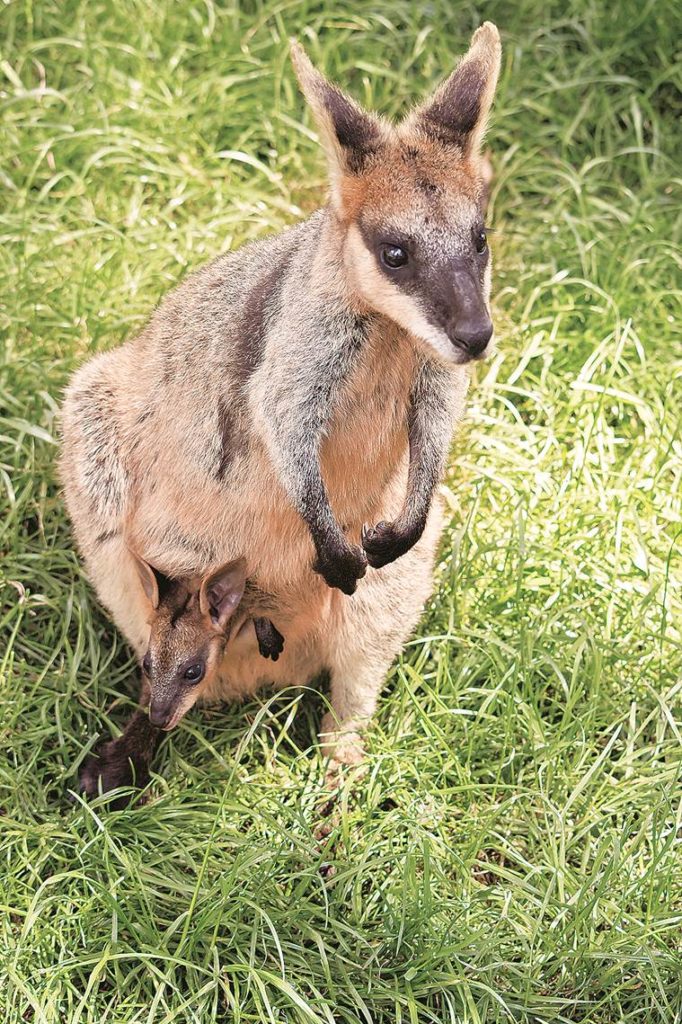Focus: GS-III Environment and Ecology
Why in news?
The swamp wallaby is likely the only mammal pregnant and lactating all life long, researchers have said.
How is it possible?
- Female wallabies and
kangaroos have two uteri and two separate ovaries.
At the end of a pregnancy in one uterus, a new embryo develops in the other uterus. - Kangaroos and wallabies regularly have an embryo in the uterus, a young joey in the pouch, and a third semi-dependent young at foot, still drinking its mother’s milk.
- In kangaroos, the new embryo is conceived a day or two after the previous birth.
- In the swamp wallaby (Wallabia bicolor), the new conception happens one or two days before the previous birth.

What happens after birth?
- As soon as the mature foetus is born and settles in the pouch, the swamp wallaby arrests the development of the new embryo.
- This is called embryonic diapause, which happens in many animals to pause reproduction until the conditions are right — season, climate, food availability.
- For wallabies, this is also to ensure that the new one is born only when the pouch is free again.
- If this did not happen, the swamp wallaby would be birthing new young every 30 days — it has a short gestation period — and its pouch could not support that.
The hare parallel:
- There is only one other mammal, the European brown hare (Lepus europaeus), that conceives additional embryos before giving birth.
- There are, however, two key differences. In the hare, the new embryos are conceived in the same uterus that is already supporting foetuses in late stages — which, the researchers note, may be all the more remarkable.
- The other difference is that only the swamp wallaby is pregnant all its life.
- “The hare is only pregnant with the possibility of conceiving new embryos during distinct breeding seasons over about 5-6 months of the year. The rest of the time it is not pregnant or lactating at all.
About Swamp Wallaby:

- The swamp wallaby is a small macropod marsupial of eastern Australia.
- It inhabits thick undergrowth in forests and woodlands, or shelter during the day in thick grass or ferns, emerging at night to feed.



